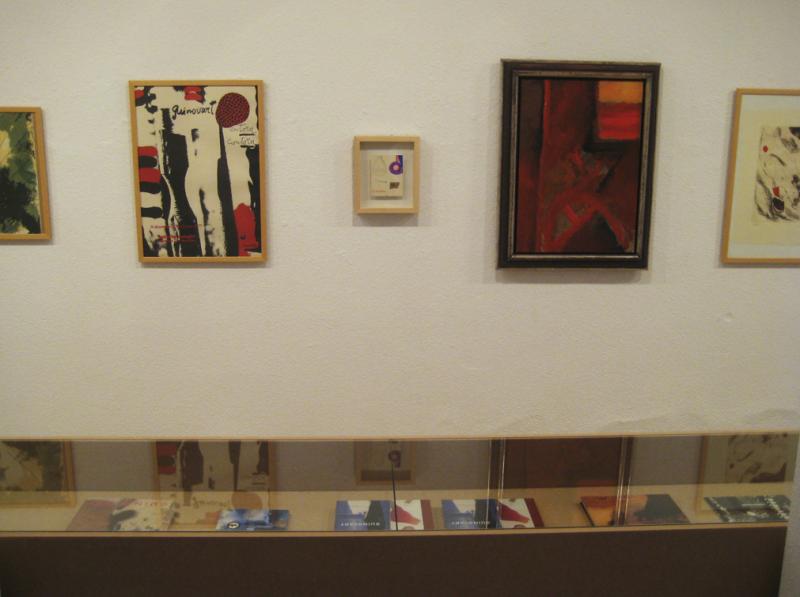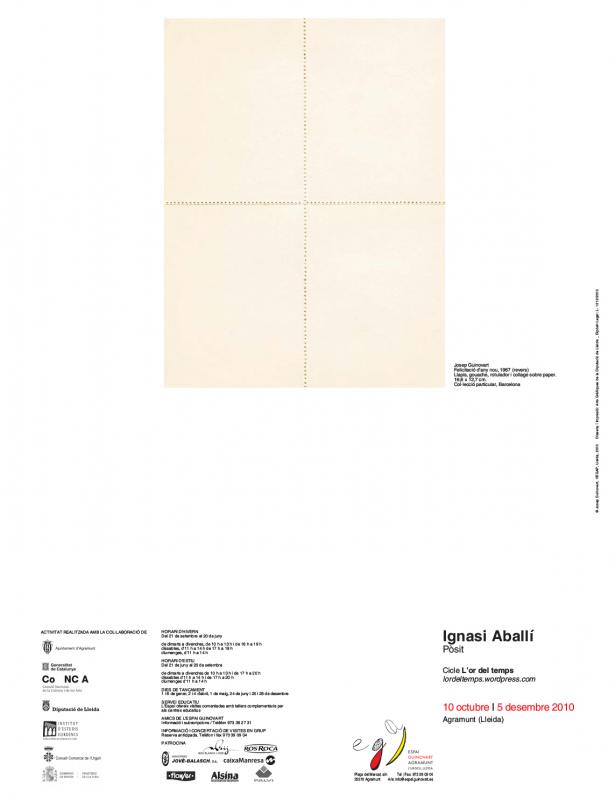Ignasi Aballí
Pósit
Ignasi Aballí is aware of the excess of noise, of substantivization, of brand, of objects, of me, and how this excess is detrimental to sense, to one's own consciousness. Thus, it is proposed to deconstruct (or reconstruct) the nature of the creative act and, with it, the identity that develops in the dialectic between our will and the world. And what is the factor, the vehicle and the substrate of all our actions and their possible meaning? Time.
Aballí follows a singular method: letting do, not doing but time paint, model, compose, do. He has put it into practice with the work of art (for example, in his canvas covered with dust stuck for years) and also in what surrounds it, legitimizes and communicates: the exhibition. In 2008, at the Museum of Portimão, he left his camera in a case and promised not to take any pictures during the time the exhibition lasted. For the Espai Guinovart de Agramunt, Aballí has proposed a specific work. But there is no piece in it, nor has the artist produced anything, but the piece is an exhibition. Pòsit (Poso) is an exhibition of works that Aballí has accumulated over the years, by interest or chance, of Josep Guinovart. Logically, as an exhibition it is very modest, minimal and fragmentary, compared to what can be seen synchronously in the Espai Guinovart, where a very remarkable selection of works is offered.
Aballí presents a work that is not such, that has not been made but collected (after constituting itself at random from time) and that has been produced by another author. What we see in it is what Aballí de Guinovart physically has left: a sediment, that is, what time has been decanting, in opposition to the deposit that is deliberately constituted in the protective zeal for saving and forecasting the future. Aballí recontextualizes these vestiges, but it is not simply (as informalists and neorealists had done before) detritus, but absence, which is a kind of particular presence, in the negative, both of the author (Aballí?) And of the producer (Guinovart?).
Aballí prefers to inventory, classify, collect without accumulating or treasuring, to make visible processes and realities. Faced with the contemporary culture of consumption and quantity, it offers an alternative that is as discreet as it is compelling. Ultimately, perhaps this is the aspect that brings together two artists so different generationally and content: this kind of fundamental ecology. Guinovart expresses it in a romantic way, Aballí does it economically. Its relevance does not vary.
Àlex Mitrani



